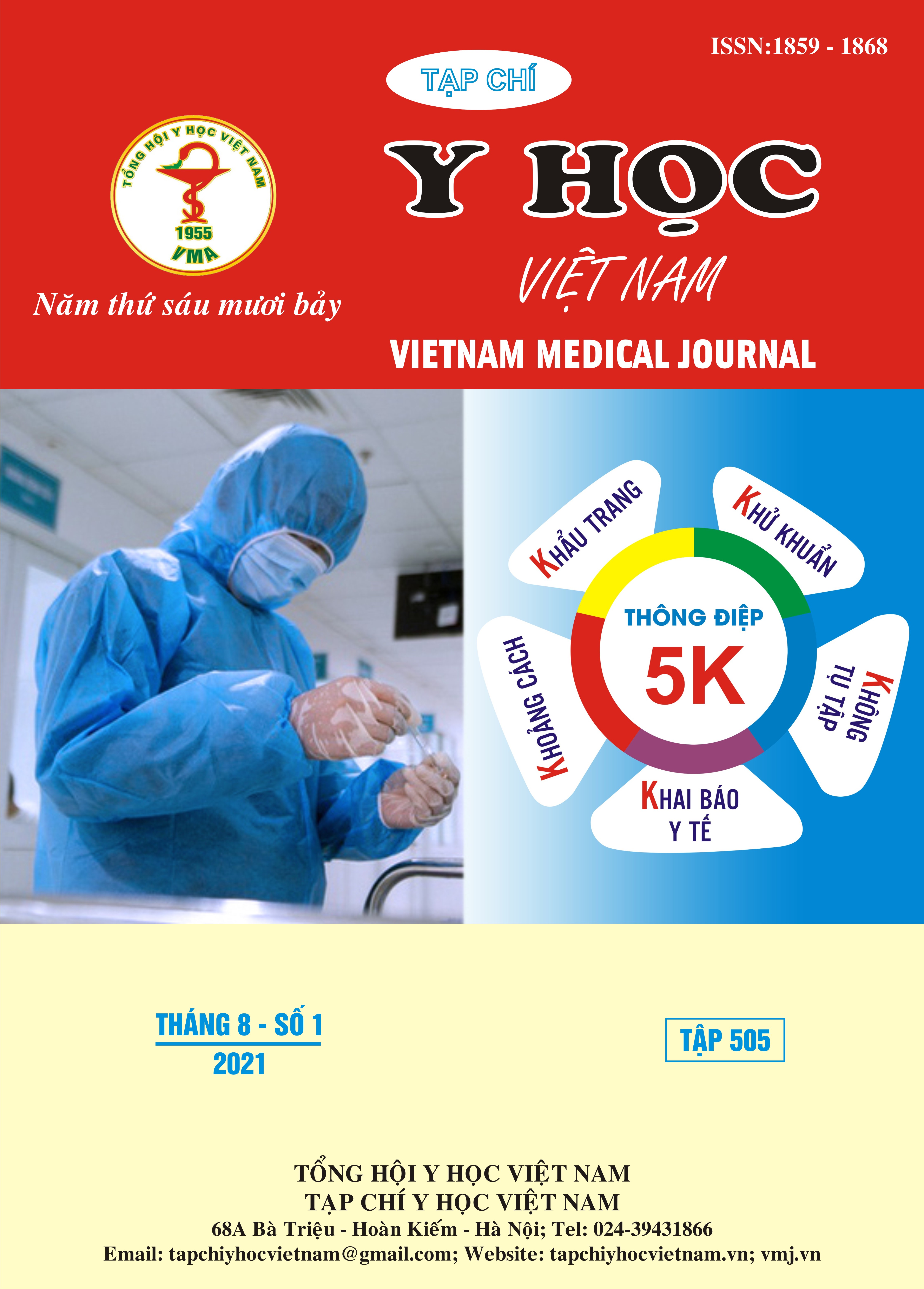SITUATION OF COMPLICATIONS IN DIALYSIS AND RESULTS OF CARE FOR PATIENTS WITH END-STAGE CHRONIC RENAL FAILURE UNDERGOING DIALYSIS AT CA MAU GENERAL HOSPITAL
Main Article Content
Abstract
A prospective descriptive study performed on 384 patients at Ca Mau General Hospital from November 2020 to May 2021 on patients with end stage chronic renal failure undergoing dialysis at the Department of Nephrology and Dialysis - Hospital. Ca Mau General Hospital, Ca Mau General Hospital. Objectives (1) Determine the rate of complications in dialysis and related factors (2) Evaluate the outcome of care for patients with end-stage renal failure undergoing dialysis at Ca Mau General Hospital. The collected data are medical records of the patient's complications during the dialysis session and care and counseling for the patient. Result: men are taller than women. The highest rate is in the 36-59 age group, the lowest is in the 18-35 age group. Most are poor households accounting for 84.4%, followed by poor households (10.9%). Most of the patients with disease older than 3 years accounted for 94.8%, less than 3 years only 5.2%. There is a complication of hypotension: the highest rate is in the 3rd hour (20.8%), followed by the 2nd hour (3.9%), no less (0.0%), after the 2nd hour of filtration. ,6%. The whole cycle had complications of hypotension, accounting for 27.3%. FAV failure in dialysis only accounted for 0.3 at the 3rd hour and after dialysis accounted for 6.3%, including the cycle accounting for 6.5%. The rate of complications in the dialysis session accounted for 37% and accompanied by symptoms of complications such as cold moist skin, sweating: at the 3rd hour and after copper dialysis accounted for 19.5%, cramps: rate the highest rate at the 3rd hour (20.1%), after filtration accounted for 6.5%. Nausea, vomiting: only at the 3rd hour (15.6%) and after dialysis (1.6%), dizziness, dizziness: accounted for most at the 3rd hour (19.5%) and after dialysis (3rd hour) ,1%), abdominal pain, defecation: hour 1 and 2 accounted for 3.6%, hour 3 (3.4%), and after dialysis (3.9%).
Article Details
Keywords
Complications, cyclic dialysis, clinical, subclinical, care, counseling, patient
References
2. Đỗ Thị Hiến và CS (2020), Đánh giá sự tuân thủ điều trị ở bệnh nhân tang huyết áp được điều trị ngoại trú tại Phòng khám Nội Tim mạch – Bệnh viện Trung ương Quân đội 108, Tạp chí Y Dược lâm sàng 108, Hội nghị KH điều dưỡng bệnh viện 2020, tập 15, 11/2020
3. Trần Thị Thùy Nhi và CS (2017), Nghiên cứu tuân thủ sử dụng thuốc theo thang điểm Mirisky (VMAS – 8) và hiệu quả tư vấn trên bệnh nhân đái tháo đường típ 2. Hội Nội tiết và Đái tháo đường miền trung, 17/3/2021. Chuyên đề, đái tháo đường, tạp chí số 46+47
4. Đỗ Lan Phương (2015), “Biến chứng tụt huyết áp trong buổi lọc máu chu kỳ ở bệnh nhân suy thận mạn tính giai đoạn cuối tại khoa thận nhân tạo – bệnh biện Bạch Mai”, đề tài nghiên cứu khoa học cấp cơ sở, bệnh viện Bạch Mai, năm 2015
5. Bùi Minh Thông và CS (2018), Thực trạng công tác giáo dục sức khỏe cho người bệnh tại bệnh viện Nội tiết trung ương năm 2018. Kỷ yếu Hội nghị khoa học bệnh viện Nội Tiết trung ương mở rộng năm 2019. Tr 349 – 355.
6. Trần Thị Thanh Thảo và CS (2020), Thực trạng kỹ năng giáo tiếp, ứng xử với bệnh nhân của điều dưỡng Khoa Khám bệnh Cán bộ cao cấp, Bệnh viện Trung ương Quân đội 108 năm 2020. Tạp chí Y Dược lâm sàng 108, tập 15, số đặc biệt 11/2020


